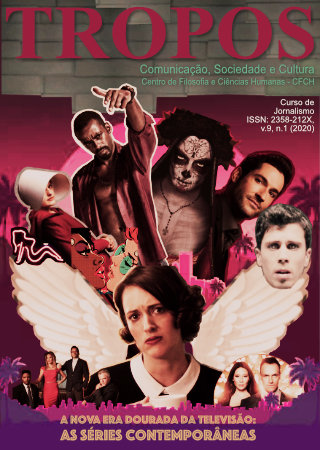PARÓDIAS DO “SENHOR DAS TREVAS”: REINVENÇÕES SIMBÓLICAS E ARQUETÍPICAS DA SÉRIE LUCIFER
Palabras clave:
Ficção Seriada; Complexidade Narrativa; Imaginário Cultural; Paródias.Resumen
O texto expõe os resultados de uma pesquisa que analisou a Primeira e a Segunda Temporadas da série americana Lucifer. O objetivo foi compreender as simbologias e os arquétipos em torno do diabo disseminados no imaginário cultural (DURAND, 2002) através das representações populares (CHARTIER, 2002). Do ponto de vista metodológico, a realização de um Grupo Focal (COSTA, 2005) expandiu as impressões obtidas na Análise Narrativa (MOTTA, 2013) a fim de avaliar a percepção dos espectadores sobre os mitos cristãos reproduzidos na série. A observação dos episódios sinalizou que a imagem do diabo é desconstruída por paródias e paráfrases humorísticas (NOGUEIRA, 2010), nas quais o sarcasmo e o viés da ironia acentuam a complexidade narrativa (MITTEL, 2012). Quanto à apropriação estética, o protagonista aparece como um ser belo, dotado de personalidade sensível, contrariando os signos e os estereótipos comuns às identificações culturais (HALL, 2004) relativas ao diabo. Tais artifícios corroboram um processo narrativo não linear que embaralha as características da vilania e concede carisma ao anti-herói. Nesse sentido, a série subverte os códigos sociais compartilhados sobre a figura do diabo apelando à sensorialidade contraditória do gênero ficção, tanto no viés discursivo quanto no imagético.
Descargas
Publicado
Cómo citar
Número
Sección
Licencia
Transferência de direitos autorais:
Declaro que após aprovado para publicação a Revista Tropos editada pela Universidade Federal do Acre (UFAC), passará a ter os direitos autorais do trabalho, que se tornarão propriedade exclusiva da Revista, sendo permitida a reprodução total ou parcial desde que devidamente referenciada.

